Solve Kars Garden Microclimates: Winter Protection Tips
Quick Winter Prep Guide
Key takeaways for protecting your Kars garden this winter:
- Identify your yard's specific microclimates (warm/cold/windy spots).
- Mulch perennials and shrubs after light frost but before deep freeze.
- Wrap sensitive evergreens (like Boxwood, Rhododendrons) and young trees.
- Protect roses (especially hybrid teas) by mounding soil around the base.
- Empty and store pots, drain hoses, and clean tools before winter.
- Water evergreens and new plants deeply before the ground freezes solid.
Need help getting your garden ready for winter? Request a personalized quote today!
Introduction: Brrr! Winter's Coming to Kars – Is Your Garden Ready?
Okay, Kars neighbours, take a deep breath… you can almost smell the snow coming! Another legendary Ottawa winter is gearing up, ready to test our resolve (and our snow shovels). While we dream of cozy fires and maybe finding where we stored those extra-warm socks, let's not forget our faithful friends out in the yard – the plants that make our landscaping shine all summer! Is your garden truly ready for the frosty challenge ahead? Need tips on preventing frostbite during those cold prep days? Ottawa Public Health has valuable information.
Getting your garden beds prepped now is crucial for success next spring. It might seem like all of Ottawa shares the same deep freeze, but your little patch here in Kars, or maybe just down the road in Manotick or Osgoode, likely has its own unique microclimate. Yes, small variations in wind, sun exposure, and even how snow collects can make a big difference to tender perennials and shrubs!
Think of this guide as your friendly helper, packed with practical tips specifically geared towards our area. Our goal is simple: to help you understand your garden's specific needs and provide actionable advice for effective winter protection. We'll help you tuck in your plants properly, shield vulnerable roots and branches from harsh conditions, and ensure everything has the best possible chance to survive the freeze and burst back to life beautifully next spring. Let's get your garden buttoned up and ready! Check the latest Ottawa forecast from Environment Canada to plan your prep work.
Decoding Your Kars Backyard: Microclimates Explained
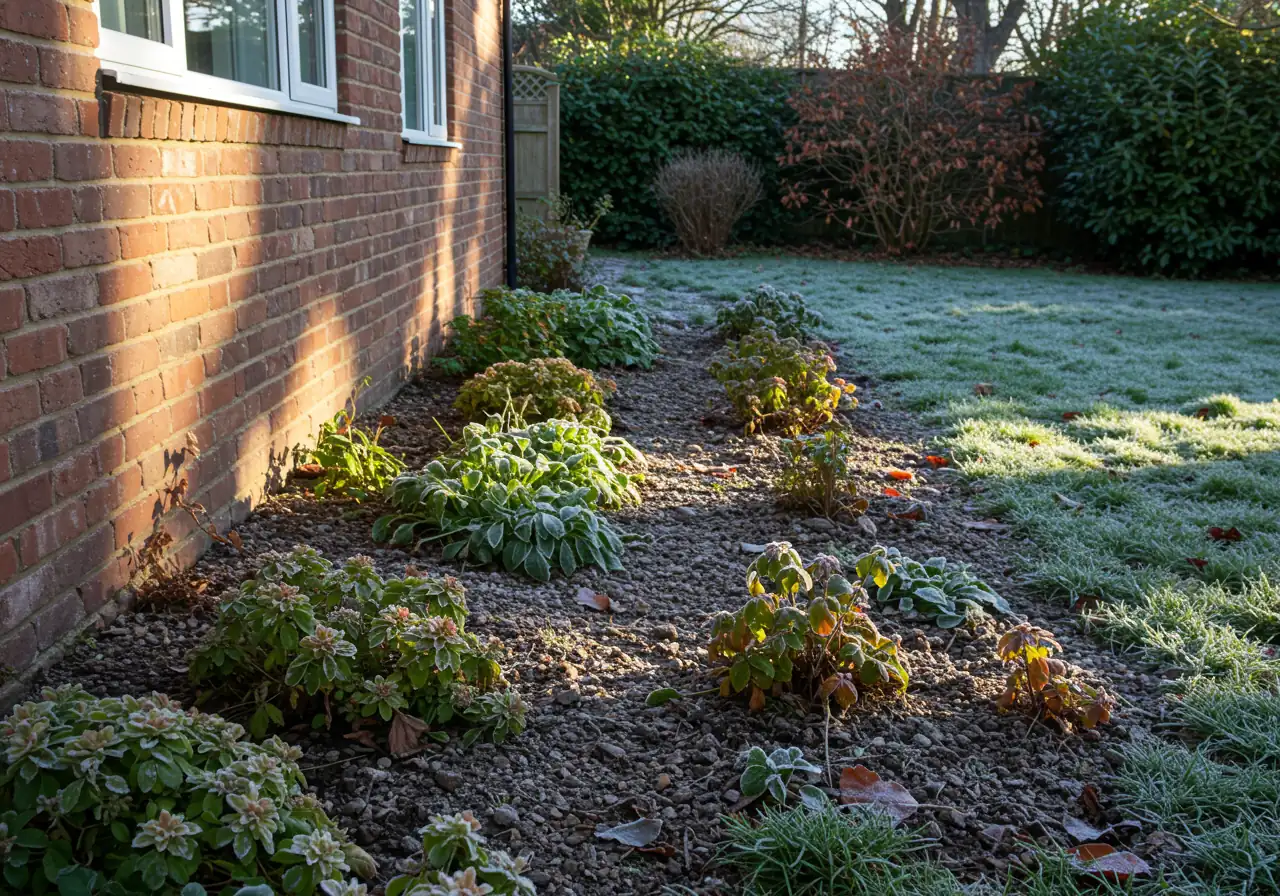
Ever noticed how the snow melts faster in one part of your yard but lingers like a stubborn houseguest in another? Or how those perennials near the house wall seem happier than the ones out in the open? Welcome to the fascinating world of microclimates! Think of them as tiny weather pockets specific to your Kars property, even different from your neighbour's yard just down the street in Manotick.
So, what exactly is a microclimate? In simple terms, it’s a small area where the climate conditions (temperature, wind, humidity, light) differ from the surrounding general climate – like our broader Ottawa weather pattern. Your backyard landscaping isn't one uniform environment; it's a patchwork of these little zones.
What creates these zones right here in Kars? Lots of things!
- Structures: Your house, garage, sheds, and fences absorb heat during the day and release it slowly, creating warmer spots. A south-facing brick wall is practically tropical compared to a shaded north-facing corner!
- Topography: Does your yard slope? Low spots might collect cold air and moisture, potentially leading to icy patches in winter. Proper yard grading is essential; poor slopes can worsen drainage issues, especially before the ground freezes. For tips on getting slopes right, check out these Kenmore fall grading and drainage solutions. Understanding your property's contours is key, as detailed in this helpful Embrun drainage and site grading guide.
- Exposure: A wide-open lawn exposed to those biting winter winds blowing off nearby fields feels much colder than a sheltered garden bed protected by a dense hedge or fence. Proximity to the Rideau River might also influence temperature and wind slightly compared to more inland spots.
- Plant Cover: Large trees provide shade in summer but can also block wind or trap cold air. Ground cover can help insulate the soil.
- Soil Type: Our local soils vary, and this matters in winter too! Heavy clay soil, common in areas around Ottawa, holds moisture. If drainage is poor, this can lead to waterlogged, frozen root zones harmful to many plants. Improving drainage in such areas is crucial, perhaps even considering solutions like those discussed for Metcalfe rain gardens and clay soil drainage challenges. Proper soil preparation is key year-round.
Understanding these mini-environments is super important for successful gardening. A slightly warmer, sheltered spot might allow you to successfully grow a plant that's borderline hardy for our Zone 5 climate. Conversely, a cold, damp, windy corner needs tougher plant choices and maybe extra winter protection. Recognizing these zones helps you place plants where they'll thrive and anticipate where snow might drift heavily or melt away, leaving plants exposed. You can find more specific advice in these Vernon microclimate garden tips to solve common issues.
Take a walk around your yard. Feel the difference in wind between the front and back. Notice where the sun hits longest. Where does water pool after rain? Observing these details helps you map your microclimates. If figuring out your yard's unique conditions or tackling related drainage problems feels overwhelming, exploring professional landscaping and yard maintenance services can provide expert assessment and solutions tailored to your Kars property. Find our business easily on Google: Clean Yards on Google.
Know Your Enemy (and Your Friends): Identifying Vulnerable Plants & Hardy Helpers
Okay, Kars gardeners, let's talk plant personalities! Just like people, some plants are tough cookies ready for an Ottawa winter blast, while others are more like delicate flowers needing a cozy sweater (or at least a good layer of mulch). Figuring out who's who in your garden beds is key to effective winter protection.
First up: Hardiness Zones. Ottawa sits mostly in Zone 5a or 5b. This number tells you the coldest average winter temperature a plant can likely survive. Plants rated for Zone 5 should be okay here, but those rated for warmer zones (like Zone 6 or higher) are your vulnerable VIPs needing extra care. Even some Zone 5 plants, especially if they're newly planted, not well-established, or evergreen broadleaves (like Rhododendrons or Boxwoods), can struggle with our freeze-thaw cycles and drying winter winds. Roses, particularly hybrid teas, often need significant protection.
On the flip side, you've got your hardy helpers! These are typically plants rated for Zone 4 or even colder. Many native shrubs and perennials, evolved for our climate, fall into this category. Think sturdy Coneflowers, Hostas (usually!), Daylilies, Sedum 'Autumn Joy', Spirea, Dogwood, and many ornamental grasses. These guys usually just need a basic tidy-up and maybe some mulch around the base. Getting rid of dead leaves and debris is important, a task covered by services like the Greely garden clean up service or the Metcalf yard cleanup service, ensuring pests and diseases don't overwinter near your plants. Specific services like the Metcalf garden clean up service focus purely on garden areas.
Remember those microclimates we talked about? Use them strategically! Plant your more sensitive souls in sheltered spots – near the house, protected from wind, maybe where snow drifts nicely for insulation. Don't stick a borderline hardy Rose out in an exposed, windswept corner unless you're prepared for major winter wrapping duty! Choosing the right spot from the start during a new garden installation can save you headaches later.
Plant Hardiness Quick Reference
| Plant Type | General Hardiness (Ottawa Area) | Winter Protection Needs |
|---|---|---|
| Hybrid Tea Roses | Zone 5b/6 (Borderline/Vulnerable) | High (Mounding soil, possible cone/wrap) |
| Boxwood (Buxus) | Zone 5 (Vulnerable to wind/sun) | Moderate (Burlap wrap in exposed spots) |
| Hostas | Zone 3/4 (Very Hardy) | Low (Mulch beneficial) |
| Japanese Maple (Laceleaf) | Zone 5b (Often needs shelter) | Moderate-High (Sheltered spot, possible wrap when young) |
| Coneflower (Echinacea) | Zone 4 (Hardy) | Low (Leave seed heads for birds/interest, mulch optional) |
Knowing your plant roster helps you prioritize your winter prep efforts. If you need a hand getting everything sorted before the snow flies, general Ottawa garden clean up services can take the load off. For a full range of help, from cleanup to protection, consider exploring professional landscaping and yard maintenance services.
Your Winter Protection Toolkit: Mulch, Wraps, and Other Tricks
Okay, team, let's talk defense! Now that you know which plants in your Ottawa garden are the tough guys and which ones need a bit more pampering (we're looking at you, fancy roses!), it's time to assemble your winter protection toolkit. Think of it as bundling up your green buddies for the long, cold nap ahead. Don't worry, it's easier than wrestling a snowsuit onto a toddler... usually.
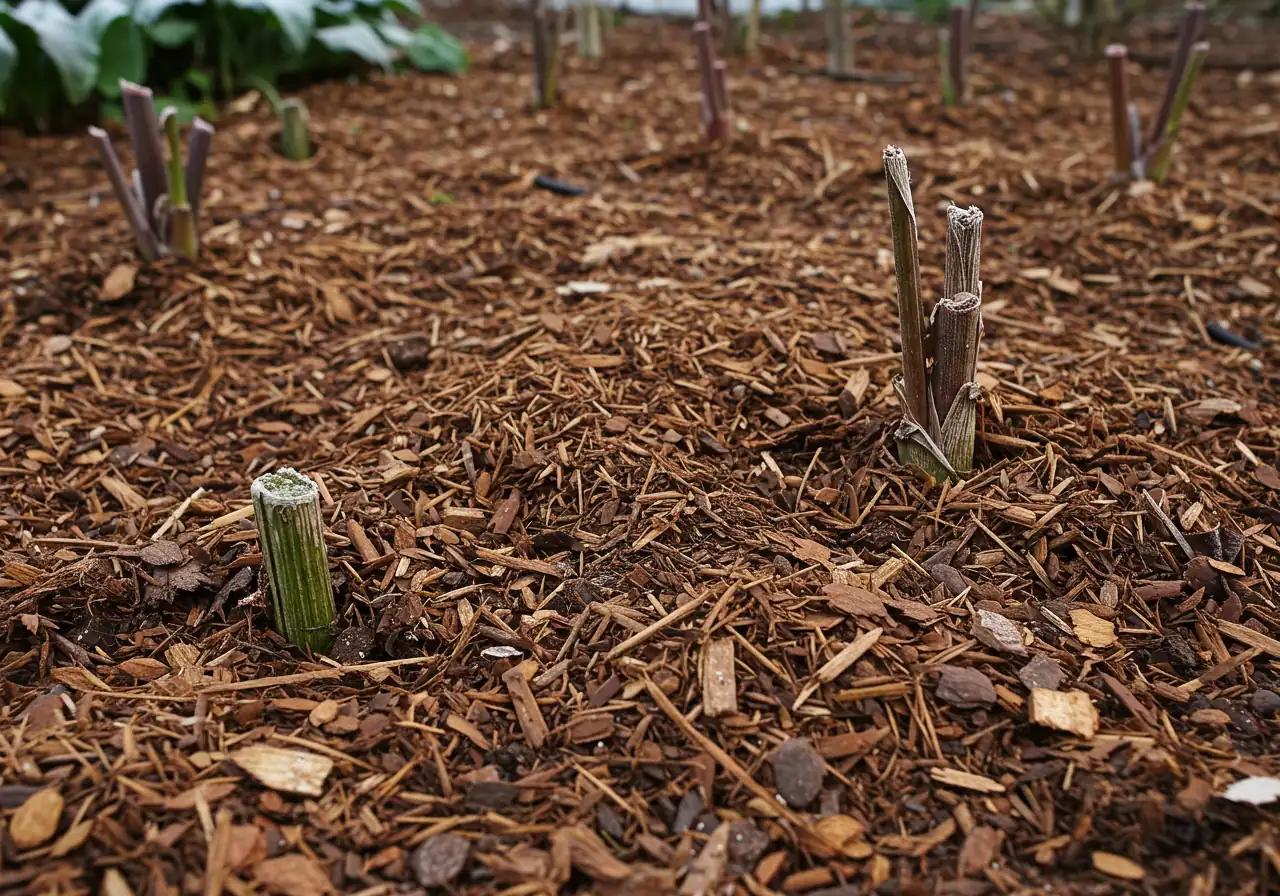
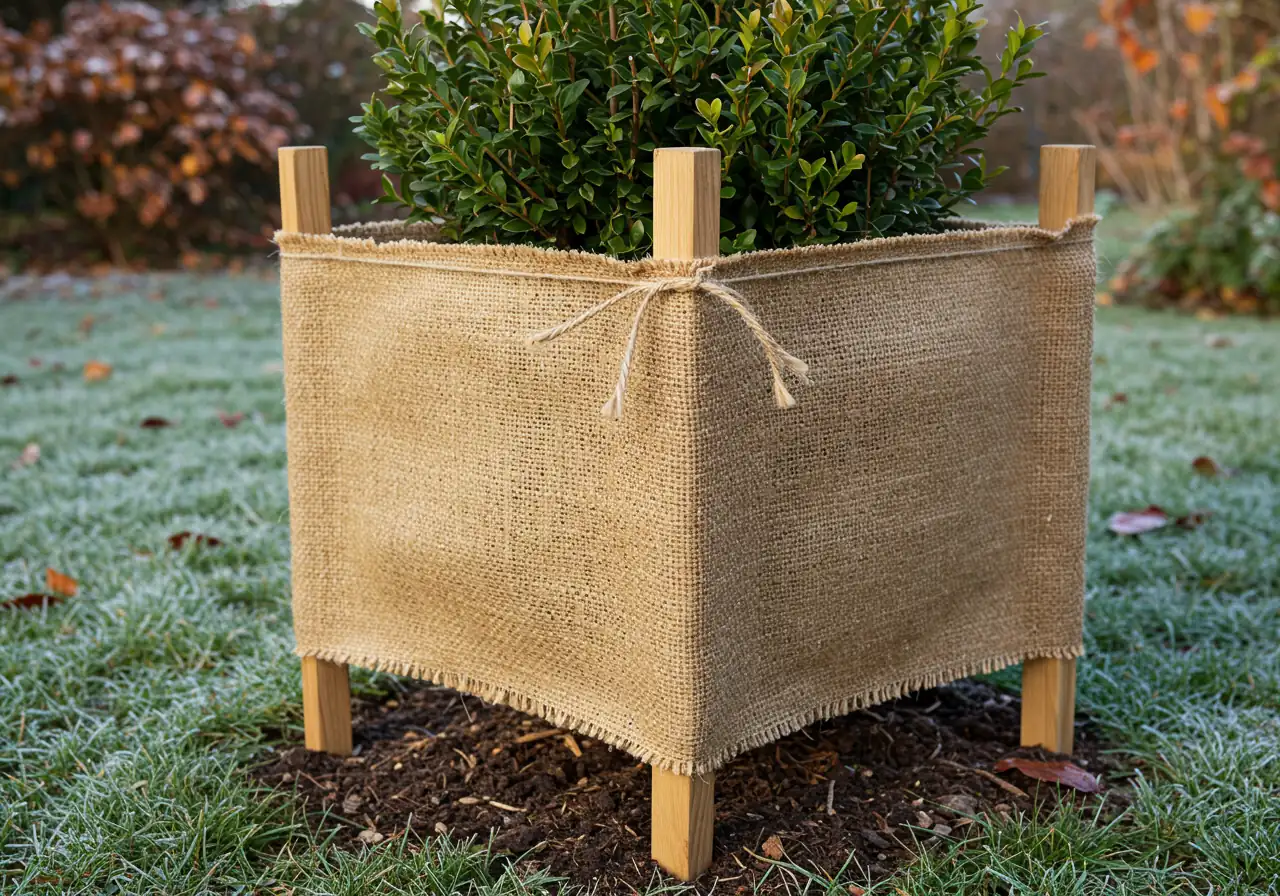
Mulch Magic: The Coziest Blanket
Mulch is probably the single most important winter protection trick for your perennials and the base of shrubs. Why? It's like a fluffy duvet for the soil. It doesn't stop the ground from freezing, but it *does* help keep the temperature more stable. Those nasty freeze-thaw cycles we get can actually push plants right out of the ground – it’s called frost heave, and it’s no fun for roots!
- When & How Much: Wait until the ground has had a light freeze, usually sometime in late October or November around here, but *before* it freezes solid. Apply a generous layer, about 3 to 4 inches deep, around the base of your plants.
- What Kind: Shredded bark, wood chips, straw, or pine needles all work well. Need help getting that perfect, even layer? Professional Mulching and edging services can make quick work of it.
- Eco-Friendly & Free: Got leaves? Don't just curse them, use them! Rake 'em up, run your lawnmower over the pile a few times to shred them (dry leaves work best), and voila! You've got fantastic, free mulch that will break down and feed your soil. Just be sure you've cleared away any diseased plant debris first. A good fall tidy-up is essential – something covered by an Ottawa garden clean up service if you need a hand. Consider our dedicated City garden clean up service too.
Wrap Stars: Burlap to the Rescue
Some plants, especially broadleaf evergreens (like Rhododendrons, Boxwoods) and sometimes young cedars or sensitive shrubs, really dislike the harsh winter wind and drying sun. That’s where burlap wraps come in handy. They act like a protective screen.
How-To Wrap Like a Pro:
- Hammer 3 or 4 sturdy wooden stakes into the ground around the plant, leaving a few inches of space between the stakes and the branches. Avoid damaging major roots.
- Starting at the base, wrap the burlap around the *outside* of the stakes. Overlap the edges as you go. Creating this air gap between the burlap and the plant is key for insulation. Try not to wrap burlap tightly right against the foliage.
- Secure the burlap to the stakes using twine or a staple gun. Pull it snug, but not super tight.
- Leave the top open! This allows for some air circulation and prevents heat buildup on sunny winter days.
- Why Bother? Burlap protects against windburn (looks like brown, crispy leaves), sun scald (similar damage from intense winter sun), and can also discourage deer and rabbits from nibbling.
- Downsides? It takes time and isn't the prettiest look for your winter landscaping. Also, remember to remove it promptly in the spring as temperatures rise! If you've got a lot to wrap, or just want it done right, services like the Metcalf property cleanup service often handle shrub wrapping as part of their fall prep. Full property clean up ensures everything is tidy.
Other Handy Tricks:
- Rose Cones: Those white Styrofoam cones *can* help protect the delicate graft union on hybrid tea roses. Place them over the rose *after* the ground starts to freeze. Cut a few ventilation slits near the top. *Tip:* They work better if loosely filled with straw or dry leaves for extra insulation. *Caution:* They can sometimes trap too much moisture or heat, so keep an eye on them.
- Windbreaks: If your yard is in a wide-open spot (think areas near Richmond or Kenmore facing open fields), a temporary windbreak can be a lifesaver. Installing snow fencing or even just burlap stretched between stakes on the windy side (usually north or west) can shield more delicate garden beds.
- Don't Forget to Water: Seems weird, right? But evergreens especially can dry out over winter because they can't draw water from frozen ground. Give them, and any shrubs or perennials planted this year, a good, deep soaking *before* the ground freezes solid.
Choosing the right protection method and materials is crucial for success. Our guide on material selection offers more insights into picking the best mulch or wrap for your needs. Putting in this effort now sets your gardening adventures up for a fantastic start next spring. For taking these steps to care for your landscape, we sincerely say thank you! Your happy, healthy plants will be the real reward.
Effective Mulching
Apply 3-4 inches of organic mulch (shredded leaves, bark, straw) after a light frost but before the ground freezes solid. Keep mulch slightly away from plant crowns/stems to prevent rot. Mulch moderates soil temperature, reducing frost heave.
Need mulch delivered and spread? Check our Mulching Services.
Wrapping Sensitive Plants
Use burlap around stakes (not tight against the plant) for broadleaf evergreens (Rhododendrons, Boxwood) in exposed sites. This prevents windburn and sunscald. Ensure the top is open for air circulation. Remove wraps promptly in spring.
Consider tree guards for young, thin-barked trees to prevent rodent damage and sunscald.
Winter Tool Care
Clean all soil off shovels, trowels, and pruners. Sharpen blades. Wipe metal parts with oil (like WD-40) to prevent rust. Store tools in a dry place, preferably hanging.
Proper lawn care includes maintaining your tools!
Special Cases: Protecting Roses, Evergreens, and Young Trees
Okay, let’s talk about the garden's VIPs – the plants that sometimes need a little extra TLC to make it through our legendary Ottawa winters. Protecting roses, evergreens, and young trees isn't rocket science, but knowing their specific needs can make all the difference between spring beauty and, well, disappointment. They face unique challenges like drying winds, scorching winter sun (yes, really!), hungry critters looking for a snack, and that annoying frost heave, especially in our local heavy clay soil often found around Ottawa and areas like Greely.
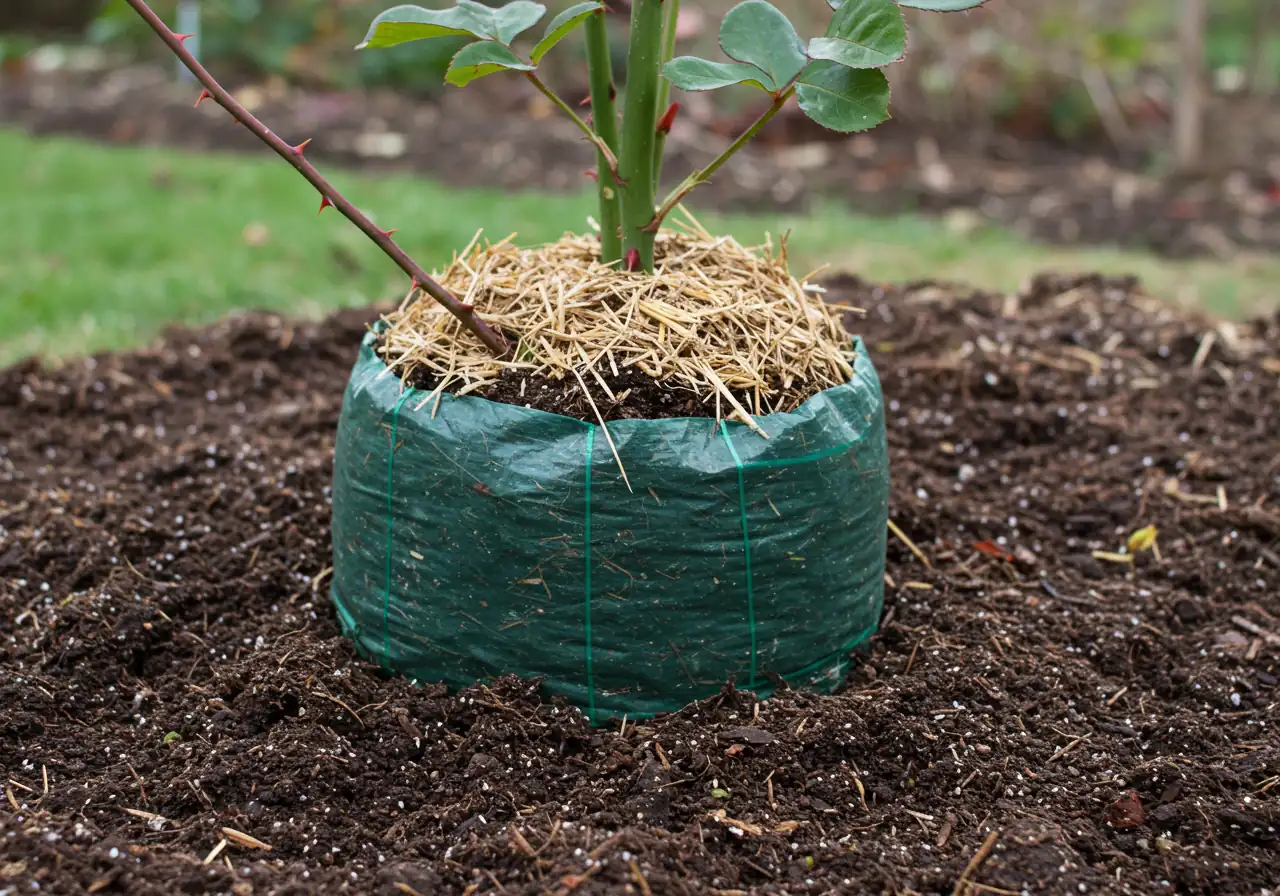
- Roses (Especially the Fancy Ones): While tough shrub roses often fend for themselves, those beautiful hybrid tea, floribunda, and grandiflora roses are the real divas of the winter garden. They need special winter protection. After a few good frosts (but before the ground freezes solid!), gently prune back the longest canes to prevent wind whipping. The most critical step is protecting the graft union – that knobby bump near the base where the fancy variety joins the hardy rootstock. Mound loose soil, compost, or well-rotted manure around the base, creating a hill about 10-12 inches high. You can top this with insulating mulch like straw or shredded leaves. Those Styrofoam rose cones? They can offer extra protection, but ensure they have ventilation holes, and ideally, fill them loosely with straw. Proper protection starts with the right supplies; our guide on choosing protective gardening materials can help you decide.
- Evergreens – Not All Are Created Equal:
- Broadleaf Types (Rhododendrons, Azaleas, Boxwood, Holly): These guys keep their leaves, making them prone to drying out (windburn) and sunscald in winter. Burlap screens or wraps are often the best defense. Remember to set up stakes around the plant and wrap the burlap around the stakes, leaving an air gap – don't bind it tight against the foliage! Watering them deeply in late fall before the ground freezes is also vital.
- Needled Types (Pines, Spruce, Firs, Cedars): Generally tougher against drying winds, but heavy, wet snow or ice can break branches, especially on upright, narrow cedars or junipers. Gently tying the branches together with soft twine can prevent splitting. Also, be mindful of salt spray if plants are near roads or sidewalks receiving winter treatment – this can cause browning, especially where frequent city yard cleanup service involves de-icing. A burlap barrier might help shield them.
- Young Trees – Guarding the Future: Newly planted trees, or those with thin bark (like maples or fruit trees), need their trunks protected. Why? Two main reasons: sunscald (bark splitting caused by daytime sun warming followed by freezing nights) and rodent damage (rabbits and voles love chewing tender bark in winter!). Use plastic tree guards or paper tree wrap, starting from the base and going up past the expected snow line. Make sure the guard isn't too tight. Keep mulch pulled back slightly from the trunk itself – piling it high creates a cozy spot for moisture *and* critters. Speaking of critters, a thorough fall property clean-up removes leaves and debris where they might hide. A clean edge around the tree base, perhaps similar to the neat look after professional sod installation, also helps monitor for problems.
Taking these extra steps for your special plants is key to a successful spring emergence. If the task list feels daunting, remember that a comprehensive Ottawa yard cleanup service can often include wrapping shrubs and preparing garden beds for the cold season ahead.
Estimated Winter Survival Rate Boost with Protection
*Illustrative data based on typical Ottawa conditions. Actual results vary by plant, location, and winter severity.
Beyond Plants: Winter Prep for Hardscaping & Tools
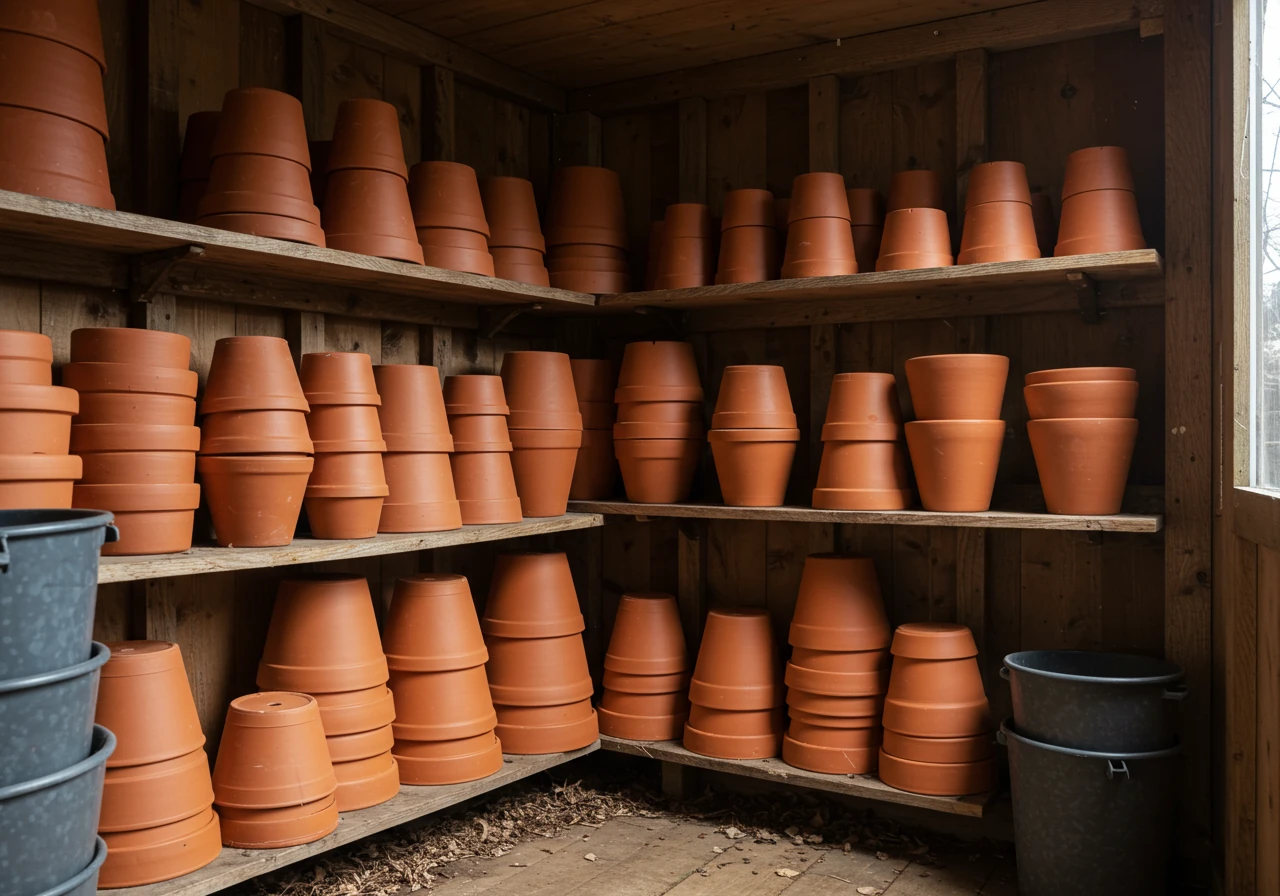
Okay, your leafy friends are snug as bugs (or maybe frozen bugs?) in their winter beds, but don't hang up your gardening gloves just yet! Your hardscaping elements – the pots, pathways, furniture – and your trusty tools also need some TLC before that notorious Ottawa freeze-thaw rollercoaster really gets going, especially in areas like Barrhaven where things can really ice up. Ignoring them now can lead to cracked pots, busted hoses, and rusty tools come spring – definitely not the welcome-back party we want for our garden gear!
Think of this as tucking in the rest of your yard:
- Empty & Store Containers: This is a big one! Terracotta, ceramic, and even some concrete pots are winter’s favourite casualties. When moist soil freezes and expands inside them... *CRACK!* Empty them completely (pop that soil into a wheelbarrow for amending beds later or composting), give them a quick clean, and store them upside down in a dry, sheltered spot like a shed, garage, or under a covered porch. Even sturdy plastic pots benefit from being emptied and stored to prolong their life.
- Drain Water Systems: Seriously, don't skip this! Disconnect garden hoses from outdoor taps (essential to prevent pipes freezing inside your house!). Drain them completely by letting water run out (draping them over a deck railing works well), then coil and store them indoors or in a shed. If you have an irrigation system, it *must* be professionally blown out or drained according to the manufacturer's specs to avoid expensive freeze damage to pipes and sprinkler heads. Frozen water expands with impressive force!
- Tool Time TLC: Your shovels, trowels, pruners, hedge trimmers, and even your lawn mower deserve a little spa treatment before their long winter nap.
- Clean off all caked-on dirt and mud.
- Sharpen blades on pruners, loppers, and mower blades (or get them professionally sharpened). Sharp tools make spring work *so* much easier. For gardening advice, you might consult resources like the Master Gardeners of Ottawa-Carleton.
- Wipe down metal parts with an oily rag (WD-40 or specific tool oil works) to prevent rust.
- Store them in a dry place, hanging up if possible. Taking care of tools now ensures you’re ready for prime seasonal lawn care maintenance next year.
- Tidy Up the Rest: Secure lightweight garden furniture, trellises, or garden art that could blow away or be damaged by heavy snow. Store cushions indoors. Ensure downspouts are clear and directing water away from your foundation. A general fall cleanup removes debris that can stain patios or pathways over winter – this type of broad tidying is often part of a local Marionville yard cleanup service. Completing these steps, perhaps included in a final city-wide yard cleanup service before winter, protects your investments and makes spring reopening much less chaotic. For targeted help in garden spaces, a fall Marionville garden clean up service can also tackle container emptying and tool storage prep. If you're hiring professionals for winterization tasks like irrigation blow-outs, it's always smart to review the service terms and conditions beforehand.
A little effort now saves you headaches (and money!) come springtime. Your future self, eager to get back into the garden, will thank you! Learn more about about us and our commitment to quality.
Winter Prep Timeline
Late October
Clean up garden beds, remove diseased foliage. Sharpen tools. Give evergreens a deep watering before freeze-up.
Early November (After Light Frost)
Apply mulch (3-4 inches) around perennials and shrubs. Begin mounding soil around tender rose bases.
Mid-November (Before Deep Freeze)
Wrap sensitive shrubs/trees with burlap or guards. Empty pots, drain hoses & irrigation. Store tools and furniture.
Late November / Early December
Final check: ensure everything is secure, water drained. Place rose cones if using. Relax!
Kars Winter Garden Quick Wins
Alright Kars neighbours, feeling a bit overwhelmed by the pre-winter gardening to-do list? Don't sweat it! Here are the absolute must-do quick wins to get your yard ready for the freeze without losing your cool (or your favourite trowel). Think of this as your cheat sheet for winter success!
- Mulch Matters Most: Seriously, if you do only one thing, make it this. *After* the first light frost but *before* the ground freezes solid, spread a cozy 3-4 inch blanket of shredded leaves, straw, or bark mulch around the base of your perennials and shrubs. This keeps soil temperatures stable and prevents frost heave. Clearing leaves first is key; think of the thorough job done by a professional Ottawa property cleanup service – get that debris outta there before tucking plants in!
- Wrap Up the Wind-Haters: Got tender roses, broadleaf evergreens like Rhododendrons, or maybe some young trees feeling exposed out towards the winds coming across from areas like Richmond? Give them some protection! Burlap screens (wrapped around stakes, *not* tight on the plant) or tree guards are your friends. They shield against drying winds and sunscald. This kind of specific plant care is sometimes part of a wider city property cleanup service package, protecting vulnerable landscaping assets.
- Empty Pots & Drain Hoses: Frozen water expands – it’s science, folks! Save your terracotta pots from shattering and your hoses from splitting. Empty those containers completely, disconnect and drain hoses thoroughly, and store everything in a dry spot like a shed or garage. This simple step prevents damage and headaches come spring. It's a fundamental prep task, almost as crucial as reading the terms and conditions before agreeing to any service contract.
- Final Watering Call: Give your evergreens (they still lose water in winter!) and any trees or shrubs planted this year one last, deep drink of water *before* the ground freezes hard. Frozen ground = no water uptake. Think of it as hydrating them for their long winter nap.
- Tidy Tools & Loose Ends: Don't let Jack Frost catch your tools dirty! Clean mud off shovels, pruners, etc., wipe metal parts with oil to prevent rust, and store them somewhere dry. Secure any lightweight garden furniture or ornaments that might blow away. A final sweep removes hiding spots for pests. If you had help with a major fall cleanup from a team like the Marionville property cleanup service, consider sharing your thoughts via their estimate feedback page – good communication helps everyone!
There you have it! Tackle these key tasks, and you can sip your hot cocoa knowing your Kars garden is well on its way to surviving winter and thriving next spring.
FAQs: Your Kars & Ottawa Winter Gardening Questions Answered
It depends! Sunny, windy spots and young plants benefit most from wrapping. Burlap protects broadleaf evergreens from drying windburn and sunscald. If your plants are mature, sheltered, or mostly snow-covered, they *might* be fine. But for prized or vulnerable shrubs in exposed locations, that extra winter protection is cheap insurance against damage.
Aim to mulch *after* the ground has had a few light frosts but *before* it freezes solid – usually late October to mid-November around here. Mulching too early keeps the ground warm longer, delaying dormancy. Mulching frozen ground is less effective. The key is stable soil temperature to prevent frost heave on perennials.
Rabbits love tender bark and twigs! Besides physical barriers like tree guards or wrapping, try keeping the area clean. Removing brush piles and tall grass eliminates hiding spots. Some gardeners find repellents work temporarily, but reapplication is needed. Ensuring a tidy space, sometimes assisted by a thorough city property cleanup service, reduces shelter near vulnerable plants.
Yes, clay holds moisture, which is good sometimes, but bad if drainage is poor. Waterlogged, frozen soil can suffocate roots. Ensure good fall drainage – clear low spots, maybe add organic matter earlier in the season. Avoid compacting wet clay. Good mulch helps moderate moisture and temperature swings near the surface.
You don't *have* to cut everything! Leaving sturdy stems (like grasses, coneflowers, sedum) adds winter interest and can trap insulating snow. However, definitely remove any diseased foliage to prevent problems next spring. Also, cut back anything floppy that could become a mushy mess or harbour pests over winter.
Don't panic! Hardy plants often survive neglect, though they might look rougher in spring. You might see more frost heave or some winter damage on tender plants. Focus on spring cleanup and care. If things look dire, professional help like a city garden maintenance service can assess and assist with recovery. Check out some amazing recovery examples on our garden transformations page! When contacting us, rest assured we value your privacy; you can review our Privacy Policy anytime. Regular garden maintenance can prevent future issues.
Conclusion: Sweet Dreams for Your Kars Garden (Until Spring!)
Whew! You've done it. You've braved the crisp autumn air and tucked your Kars garden in for its long winter nap. Give yourself a pat on the back! By understanding those unique little microclimates in your yard (because Kars isn't *quite* the same as Barrhaven or downtown Ottawa!), identifying which perennials and shrubs needed extra snuggles, and using smart winter protection like mulch and wraps, you’ve given your landscaping the best possible chance to bounce back beautifully next spring. Don't forget prepping your pots and tools, too – future you will be grateful!
Think of all this effort as an investment in next year's blooms and greenery. Now you can relax, enjoy the cozy season, and dream of sunshine and digging in the dirt again. Your garden is resting, ready to wake up refreshed.
Feeling like you need a little extra help buttoning everything up, or maybe planning for next year already?
- Get Personalized Advice: Unsure about specific plants or tricky spots? Contact us for a consultation tailored to your Kars property's needs.
- Need a Hand? If the to-do list still feels long, explore our professional landscaping and yard maintenance services – we handle everything from cleanup to winter prep.
- Keep Learning: Dive deeper into specific topics like drainage or plant care on our blog (link could be added if available, placeholder for now).
For now, enjoy the peace of a well-prepped yard. Sweet dreams to your garden (and you!) – we'll see you bright and blooming in the spring!

